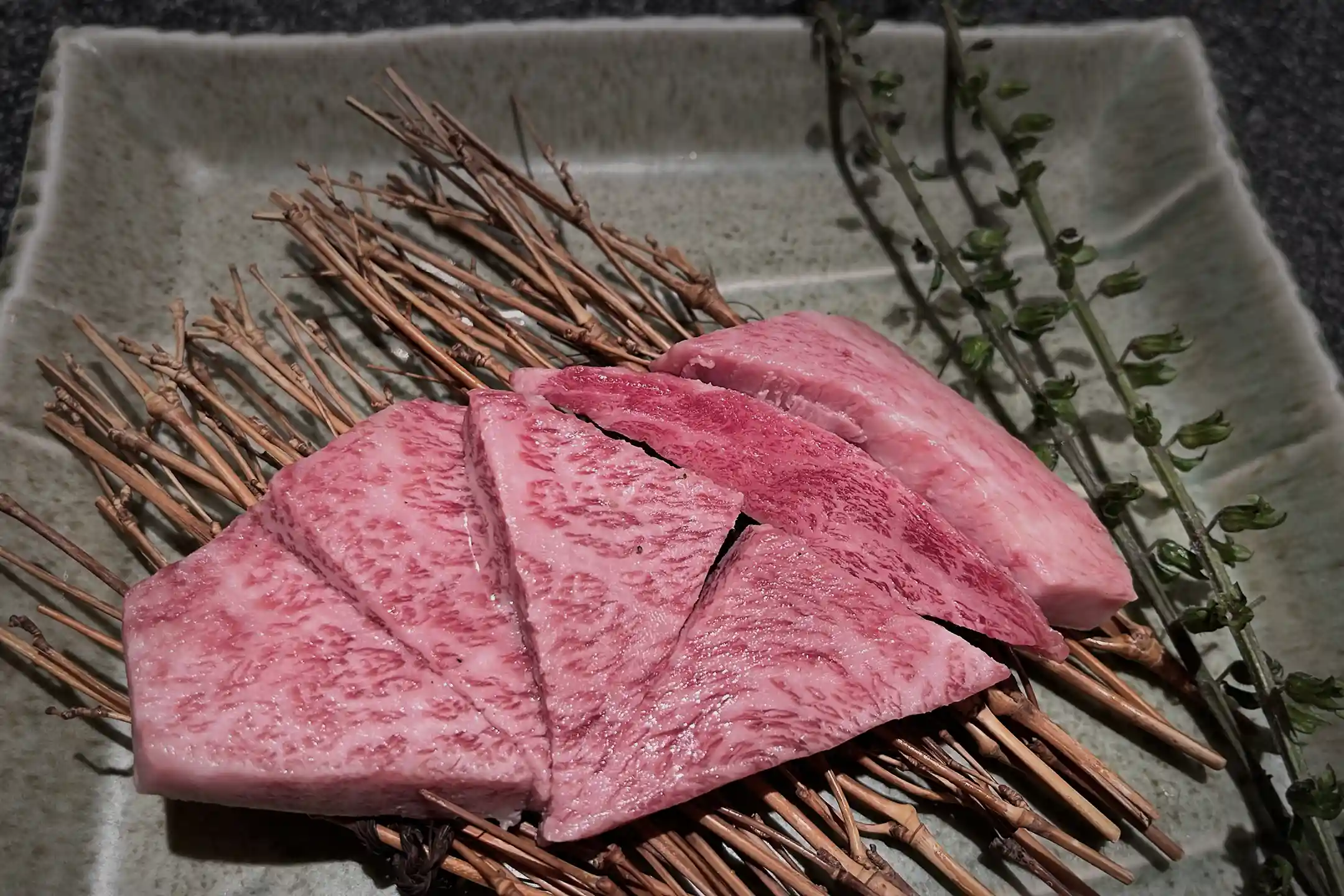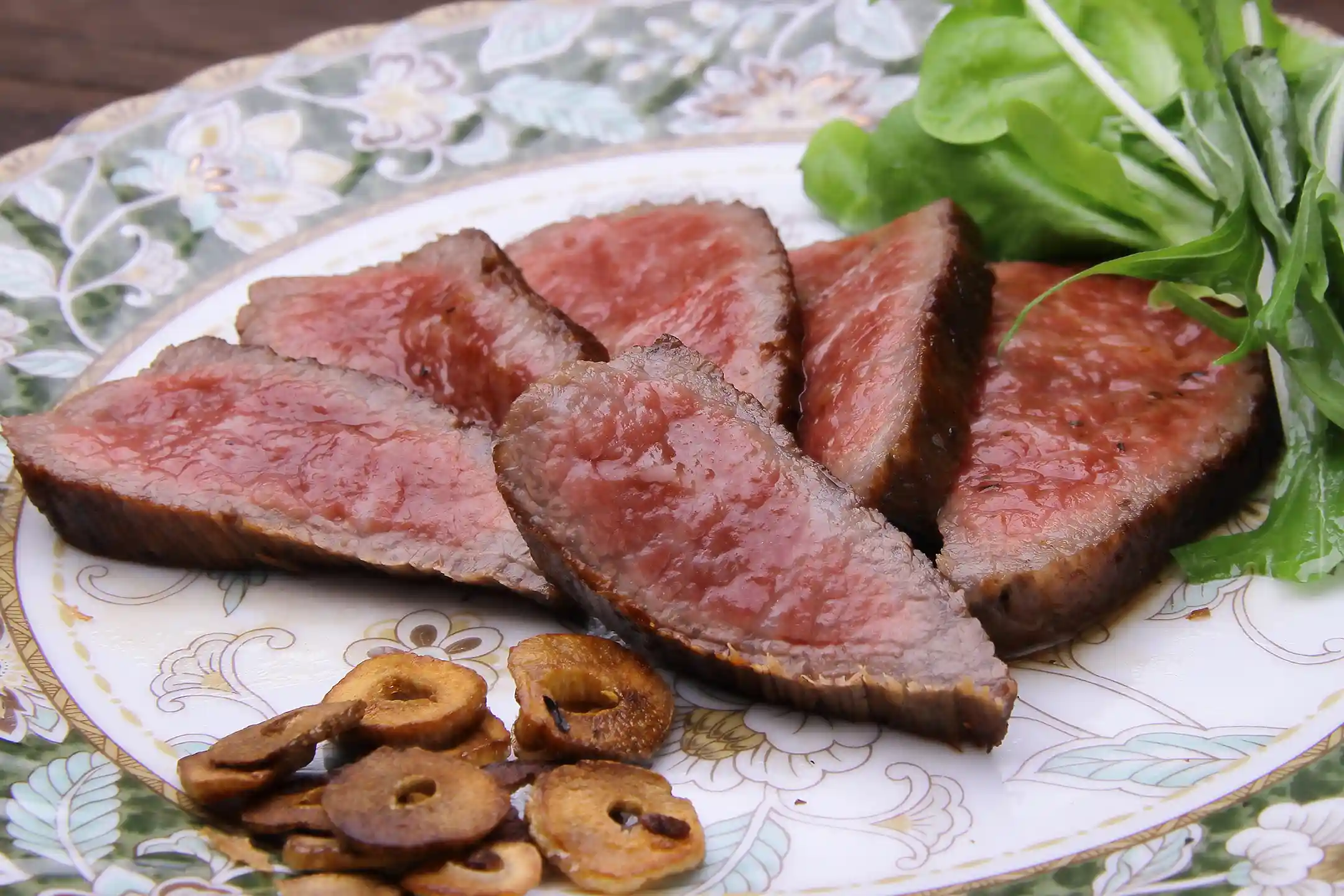Kobe Beef (“Kobe-gyu”) has gained international praise for its remarkable tenderness and flavor. Yet behind its fame lies a deeper story—one that intertwines Japan’s unique traditions with a history of intercultural encounters during modernization. After all, Japan once banned eating meat for centuries, and it was only with growing Western influence in the Meiji era that beef became part of the national diet.
For those from Western backgrounds accustomed to different dining practices, you might wonder: “Why is Kobe Beef so expensive and revered?” The reasons go well beyond mere rarity or grade; it’s tied to local heritage, meticulous rearing, and a passion that’s shaped over generations. This guide digs into Kobe Beef’s evolution, comparing cultural viewpoints between Japan and the West, so you can savor this high-quality wagyu with both culinary and cultural wisdom in mind.
What Is Kobe Beef? Its Definition, Standards, and How It Differs from Other Wagyu
The Strict Definition and Quality Standards of Kobe Beef
“Kobe Beef” comes from Tajima-gyu cattle raised in Hyogo Prefecture, meeting specific stringent conditions. While “wagyu” refers to Japanese cattle in general (like Japanese Black or Japanese Brown), Kobe Beef must adhere to rigorous rules—like yield grades of A or B, a meat quality grade of 4 or higher, and a Beef Marbling Standard (BMS) score of at least 6. The cattle must be virgin heifers or castrated steers, with set limits on carcass weight. Only a small number meet all these requirements each year, upping the scarcity factor that many overseas visitors find surprising.

Equally remarkable is the devotion to slow, careful rearing. Farmers see cattle not just as commodities but as living partners—reflecting a philosophy that differs considerably from Western mass production. This attention to every detail contributes to the iconic marbling and melt-in-your-mouth texture, giving Kobe Beef its legendary status.
Understanding the Distinctive Features of Kobe Beef by Comparing It with Matsusaka and Omi Beef
Besides Kobe Beef, Matsusaka and Omi Beef share the spotlight as “the three great wagyu brands.” Matsusaka prides itself on raising virgin heifers meticulously over long periods, resulting in a luscious, sweet fat. Omi Beef, boasting a 400-year heritage, stands out for its balanced ratio of lean to fat and its mellow taste. Kobe Beef, by contrast, is especially noted for that signature wagyu aroma and a creamier mouthfeel.
But it’s not all about deciding which is “best.” These differences reflect Japan’s broader cultural approach to brand management—where each region’s unique environment and farmers’ artisanal skill get celebrated. For those used to Western steak culture, discovering these nuances can be both enlightening and delightful.
The History of Kobe Beef and Its Cultural Background
The Origins of Kobe Beef and Regional Traditions

Tajima cattle, the root of Kobe Beef, are a type of Japanese Black raised in northern Hyogo Prefecture. Historically, cattle served primarily as farm labor rather than meat sources, so widespread beef consumption only started around the late Edo and early Meiji periods when Westerners arrived in Kobe Port. This was a tipping point, expanding Japan’s meat-eating habits just as the country modernized.
As tastes for beef grew post-Meiji, Tajima’s quality stood out and eventually led to forming the Kobe Meat Distribution Promotion Council. It’s a vivid example of how cultural exchange—rather than mere “adoption” or “rejection” of Western influences—can yield new customs and values.
The Connection Between the City of Kobe and Kobe Beef: Art and Architecture
Kobe, an international port city, features a blend of Japanese and Western influences, apparent in everything from the historical foreign settlements to contemporary art. You might see chefs performing teppanyaki—grilling beef on a hot iron plate—in front of you, much like a live show. It’s mesmerizing, and it captures how Kobe embraces worldliness without losing its Japanese foundations.
This vibrant mix can be eye-opening for visitors from Europe or the Americas who might be used to seeing their own local steakhouses as the norm. At the same time, it’s worth avoiding a simplified “exotic” view of Kobe. Tuning in to the city’s long-standing traditions and the folks behind the scenes can offer a more authentic cultural connection.
A Guide to Enjoying Kobe Beef: Restaurants, Experiences, and Sightseeing

Choosing a Top-Notch Restaurant and Tips for Making Reservations
Kobe Beef, among the world’s most coveted wagyu, can be quite pricey, and restaurants often fill up fast. However, Kobe’s international flair means many spots now offer English-language menus or online booking. For teppanyaki lovers, sitting at the counter and watching the chef is a treat akin to live culinary theater. It might differ from Western norms about how steak should be prepared, so don’t hesitate to ask the chef or server questions. The staff typically welcome the chance to share their knowledge, viewing it as a moment of cultural exchange rather than a chore.
Tips for Pairing Kobe Beef with Wine
Kobe Beef’s hallmark is its buttery sweet fat, melting at low temperatures. This richness pairs beautifully with full-bodied reds, but local sake or Japanese wines are equally intriguing for contrasting or complementing the sweetness. If you’re used to robust Western red wines with hearty steaks, exploring sake or lighter-style reds here can open new flavor dimensions. Many chefs and sommeliers can suggest pairings in English, ensuring a comfortable introduction to Japanese beverages.

Guided Museum Visits and Sightseeing Tours
Elevate your appreciation with a tour or museum visit that delves into Kobe Beef’s story. Some English-language tours spotlight Tajima cattle’s route to becoming Kobe Beef and illustrate Kobe’s legacy as a global port city. Rather than just remarking on “how different this is,” you’ll see how local farmers cherish their cattle and maintain tradition. Such context enriches every bite you take. And don’t forget about the general ambiance of Kobe itself, where quaint Western-style homes and modern architecture sit side by side—a visual cue to the city’s heritage.
Sustainability and Kobe Beef: Efforts in Advanced Technologies
Environmental Protection Initiatives at the Production Site
Kobe Beef production, like most livestock farming, raises environmental concerns such as greenhouse gas emissions. Many farmers seek to reduce methane output via specialized feed and convert manure to biogas for electricity. These strategies aren’t entirely different from Western environmental reforms—though Japan’s constraints on land and resources can magnify the emphasis on efficiency and minimal waste.
Choosing Eco-Friendly Transportation and Accommodations
If you’re planning a journey through Hyogo Prefecture or adjacent areas, you’ll likely find EV charging stations near major hotels or tourism sites. Going green on your trip—staying at accommodations with sustainability policies, for instance—can add depth to your experience, aligning with Kobe’s broader push for responsible hospitality. While “eco-tourism” is on the rise worldwide, seeing how a historic brand like Kobe Beef adapts to modern environmental standards can be particularly fascinating.
A Refined Lifestyle and Kobe Beef
Creating an Atmosphere Where You Can Leisurely Enjoy Kobe Beef
When you dine on Kobe Beef, the setting often feels as important as the meal itself. Many upscale restaurants use soft lighting, traditional Japanese décor, or subdued Western motifs, encouraging you to focus on the taste and performance. Chefs at teppanyaki counters typically introduce each cut of beef and explain the best way to appreciate it, drawing on a hospitality mindset (omotenashi) that’s distinctly Japanese. You’ll see a measured pace—no rushed turnarounds—that can feel refreshingly intimate compared to some busy Western steakhouses.

Exploring Sophisticated Shops and Hotels Around the Area
Areas around Sannomiya or Kitano in Kobe echo European flair with their old foreign settlements, but also show a modern city vibe through chic boutiques, cafés, and galleries. You might find a Michelin-starred restaurant tucked inside a converted Western-style home, or a teahouse that pairs Japanese sweets with upscale coffee beans. This collision of old and new reflects Kobe’s spirit—harmonizing global influences with local identity in a truly dynamic way.
Learning from Kobe Beef: Savoring a Profound Food Culture and History
Seminars and Workshops on Livestock Farming and Food Culture
Understanding the evolution of Japanese beef culture, particularly Kobe Beef, can reveal deeper insights about how traditions adapt over time. Seminars or workshops—sometimes at local universities or farm cooperatives—may detail how cattle rearing went from a minor sideline to a core, globally respected industry. For Western visitors, it’s intriguing to see such meticulous branding and standardized grading—an expression of Japan’s p*Source for detailed rules and transparent processes.
Recommended Books, Films, and Resources for Understanding the Cultural Background of Kobe Beef
If you want to dig further, look for books or documentaries exploring Japanese culinary history or the Tajima region’s heritage. While yes, you’ll learn about how special cuts or marbling scores came to be, you’ll also see how Kobe port’s opening shaped local lifestyles. It’s an excellent case study in how a single ingredient—beef—can reflect seismic changes in national policy, religion, and cross-cultural dialogue.

Conclusion—Embark on a Journey to Fully Enjoy the Depths of Kobe Beef’s Appeal and Culture
Kobe Beef may be best known for its exquisitely marbled and delicate taste, but there’s far more to it than a simple label of “luxury meat.” By exploring its centuries-old lineage, strict production rules, and the city of Kobe’s open-minded blend of East and West, you’ll grasp how this delicacy blossomed into an international culinary icon.
You’ll also see that Japan is confronting modern challenges—like environmental sustainability and the changing tastes of a global audience—without sacrificing the soul of Kobe Beef’s traditions. If you approach Kobe Beef with curiosity, going beyond the surface glamour, you’ll find a narrative that resonates with both Japan’s past and its dynamic present.
So, whether you’re planning a special evening at a Kobe restaurant, hoping to visit a cattle farm, or simply fascinated by how different cultures shape their dishes, consider letting Kobe Beef be your bridge to deeper knowledge. Each bite becomes a moment to appreciate Japan’s meticulous attention to detail, its global outlook, and its flair for creating extraordinary flavors—even as it evolves for future generations.
Author Bio





.webp)
.webp)